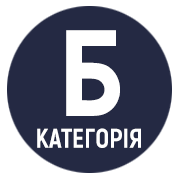PRE-PROFESSIONAL TRAINING OF FUTURE DOCTORS: HISTORICAL RETROSPECTIVE OF THE CONTENT OF PHYSICS TEXTBOOKS (XX–XXI CENTURIES) IN THE CONTEXT OF CURRENT CHALLENGES
DOI:
https://doi.org/10.32782/eddiscourses/2024-4-4Keywords:
pre-professional education, principle of continuity, natural science competence, subject competence, medical and biological physics, physical and technical discoveriesAbstract
In the article based on the analysis of educational processes in institutions of general secondary education (IGSE) and medical institutions of higher education (MIHE) theoretically substantiated implemented the basics of using physical and technical discoveries in teaching Physics for future doctors. The relevance of research is exacerbated by the fact that education in the XXI century faces the task of making a radical transition in the learning process from an informational approach to activity, aimed at developing the ability to learn, to conduct research, to form a future highly educated specialist, scientist. The intensive development of science and technology, the transformations in society require a person of deep and firm knowledge, the ability to master them, to improve and to apply the acquired knowledge to solve theoretical and practical problems and problems facing the future healthcare professional. One of the ways to solve these problems is to improve the method of use of physical and technical discoveries at the stage of pre-vocational education (physics classes, elective classes and courses in secondary schools and academic lyceums) and its development at the stage of vocational education (course of medical and biological physics in medical (pharmaceutical) institutions of the higher education). It was established that the problem of complex use of physical and technical discoveries in the methods of teaching future doctors has not been studied in the domestic scientific literature, despite the fact that due to physical and technical discoveries, the discipline “Medical and Biological Physics” undergoes changes and affects the level of development of medical equipment for the diagnosis and treatment of diseases. In the article considers and analyzes the content and functions of physics textbooks in certain historical periods of development of secondary education institutions in the early XX–XXI centuries from the historical and didactic point of view. Particular attention is focused on the inclusion of additional materials on physical and technical discoveries that have found their application in medicine. Modern approaches and further prospects for reforming general secondary education in the pre-professional training of future doctors are also outlined.
References
Про деякі питання державних стандартів повної загальної середньої освіти: постанова Кабінету Міністрів України № 898 від 30 вересня 2020 року. [Державний стандарт базової середньої освіти. Додаток 9, 10]. Урядовий портал: веб-портал органів виконавчої влади України.
Бугайов О. І. Концепція фізичної освіти у середніх загальноосвітніх закладах України: проект. Київ, 1994. 29 с
Гончаренко С. У. Фізика: пробний навчальний посібник для ліцеїв та класів природничо-наукового профілю. 10 клас. Київ: Освіта, 1995. 430 с.
Калита В. М., Стучинська Н. В. Фізика для учнів загальноосвітніх навчальних закладів та абітурієнтів. Київ: Книга плюс.2003. 280 с.
Гриценко Н. Л. Цикл курсів «Біологічна і медична фізика». Збірник програм курсів за вибором і факультативів з фізики та астрономії 6–12 кл. Xарків: Вид. група «Основа». 2009. С. 53–62.
Генденштейн Л. Е. Фізика 7 клас: підручник для середніх загальноосвітніх шкіл. Xарків: Гімназія, 2007. 208 с.
Коршак Є. В., Ляшенко О. І., Савченко В. Ф. Фізика 8 клас: підручник для загальноосвітніх навчальних закладів. 2-ге вид., перероб. та доп. Київ; Ірпінь: ВТФ «Перун», 2003. 192 с.
Шут М. І., Мартинюк М. Т., Благодаренко Л. Ю. Фізика 9 клас: підручник для загальноосвітніх навчальних закладів. Київ; Ірпінь: ВТФ «Перун», 2009. 224 с.
Божинова Ф. Я., Кірюхін М. М., Кірюхіна О. О. Фізика 9 клас: профільний рівень: підручник для загальноосвітніх навчальних закладів. Xарків: Ранок, 2013. 320 с.
Засєкіна Т. М., Головко М. В. Фізика: підручник для 10 класу загальноосвітніх навчальних закладів: профільний рівень. Київ: Педагогічна думка, 2010. 304 с.
Бар’яхтар В. Г., Божинова Ф. Я. Фізика 10 клас. Академічний рівень: підручник для загальноосвітніх навчальних закладів. Харків: Ранок, 2010. 256 с.
Фізика 11 клас. Академічний рівень. Профільний рівень: підручник для загальноосвітніх навчальних закладів / В. Г. Бар’яхтар, Ф. Я. Божинова, М. М. Кірюхін, О. О. Кірюхіна. Харків: Ранок, 2011. 320 с.
Концепція розвитку природничо-математичної освіти (STEM-освіти) (Розпорядження Кабінету Міністрів України від 05.08.2020 р., № 960) 83. URL: https://zakon.rada.gov.ua/laws/show/960-2020-р#Tex
Державний стандарт профільної середньої освіти (Постанова Кабінету Міністрів України від 25.08.2024 р., № 851). URL: https://zakon.rada.gov.ua/laws/show/851-2024-%D0%BF#Text







